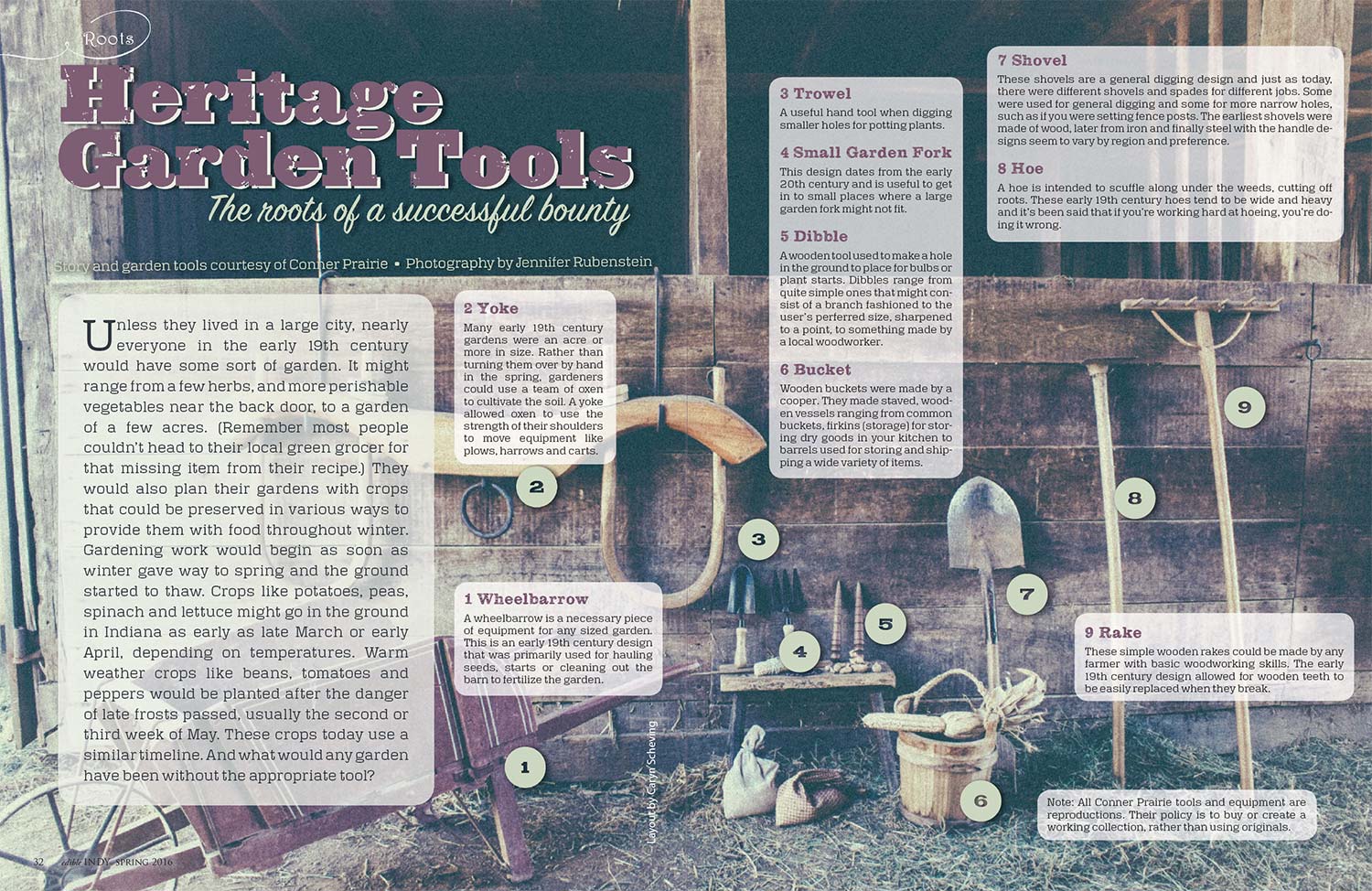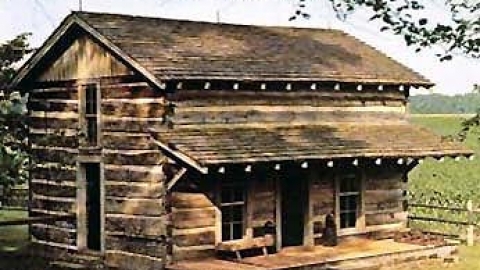Heritage Garden Tools
The roots of a successful bounty
Story and garden tools courtesy of Conner Prairie
Unless they lived in a large city, nearly everyone in the early 19th century would have some sort of garden. It might range from a few herbs, and more perishable vegetables near the back door, to a garden of a few acres. (Remember most people couldn’t head to their local green grocer for that missing item from their recipe.) They would also plan their gardens with crops that could be preserved in various ways to provide them with food throughout winter. Gardening work would begin as soon as winter gave way to spring and the ground started to thaw. Crops like potatoes, peas, spinach and lettuce might go in the ground in Indiana as early as late March or early April, depending on temperatures. Warm weather crops like beans, tomatoes and peppers would be planted after the danger of late frosts passed, usually the second or third week of May. These crops today use a similar timeline. And what would any garden have been without the appropriate tool?
1. Wheelbarrow
A wheelbarrow is a necessary piece of equipment for any sized garden. This is an early 19th century design that was primarily used for hauling seeds, starts or cleaning out the barn to fertilize the garden.
2. Yoke
Many early 19th century gardens were an acre or more in size. Rather than turning them over by hand in the spring, gardeners could use a team of oxen to cultivate the soil. A yoke allowed oxen to use the strength of their shoulders to move equipment like plows, harrows and carts.
3. Trowel
A useful hand tool when digging smaller holes for potting plants.
4. Small Garden Fork
This design dates from the early 20th century and is useful to get in to small places where a large garden fork might not fit.
5. Dibble
A wooden tool used to make a hole in the ground to place for bulbs or plant starts. Dibbles range from quite simple ones that might consist of a branch fashioned to the user’s perferred size, sharpened to a point, to something made by a local woodworker.
6. Bucket
Wooden buckets were made by a cooper. They made staved, wooden vessels ranging from common buckets, firkins (storage) for storing dry goods in your kitchen to barrels used for storing and shipping a wide variety of items.
7. Shovel
These shovels are a general digging design and just as today, there were different shovels and spades for different jobs. Some were used for general digging and some for more narrow holes, such as if you were setting fence posts. The earliest shovels were made of wood, later from iron and finally steel with the handle designs seem to vary by region and preference.
8. Hoe
A hoe is intended to scuffle along under the weeds, cutting off roots. These early 19th century hoes tend to be wide and heavy and it’s been said that if you’re working hard at hoeing, you’re doing it wrong.
9. Rake
These simple wooden rakes could be made by any farmer with basic woodworking skills. The early 19th century design allowed for wooden teeth to be easily replaced when they break.
Note: All Conner Prairie tools and equipment are reproductions. Their policy is to buy or create a working collection, rather than using originals.






